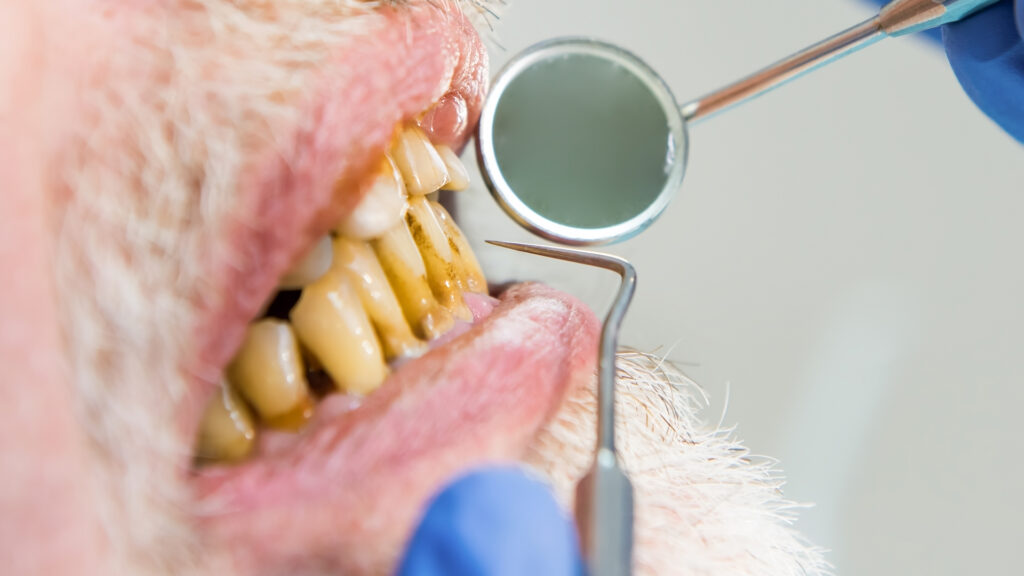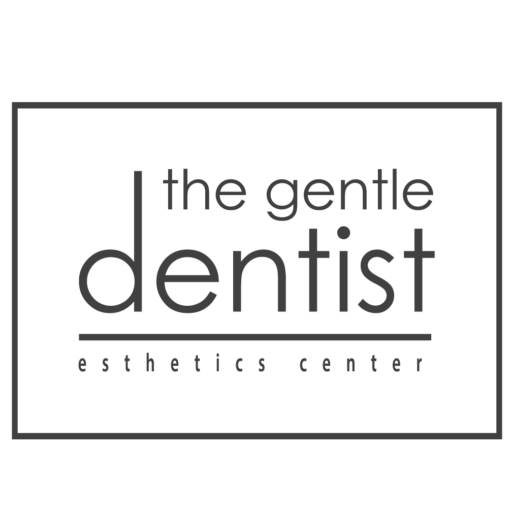
Dental tartar
Yesterday, we attended a friend’s wedding, and the buffet was full of delicious food and drinks
We were so immersed in the celebration and dancing that we fell asleep as soon as we got home. When I woke up late the next day and felt my teeth, I felt something sticky and I remembered that I had fallen asleep without brushing my teeth from the food residues yesterday.
This sticky layer of food remains is called plaque, and it is the first step in the formation of a layer of tartar, which is rich in food remains and bacteria that are very harmful to the mouth and teeth.
What is dental tartar?
It is the calcification of bacterial plaque that is deposited on our teeth.
It can also form on the edge of the gum and under it, leading to irritation of the gum tissue. Tartar gives the plaque a greater surface area to grow on and a more sticky surface area to adhere to, leading to more serious conditions like gum disease and tooth decay.
This calcification is produced by the action of saliva and food residues which, through a chemical reaction, cause this bacterial plaque to harden after a while. This may result from poor plaque control and poor oral hygiene. The areas most affected by calculus are the lower incisors, the interdental space, or the space between the teeth and gums.
Another reason that can affect tartar formation is the pH of saliva. A low pH encourages tartar formation, which is why some people are more susceptible to it than others.
Causes and risk factors
After eating, a layer is formed called plaque, which is the remains of food waste that a person has eaten throughout the day, which sticks to the outer surface of the teeth. This plaque can turn into tartar if there are some reasons, as follows:
- Neglecting to brush your teeth with toothpaste
- Eating a lot of sugary foods and drinks
- Dry mouth due to some medications or medical conditions
- Getting older
- Smoking
Types of dental tartar
We can distinguish between two types of dental tartar according to the area in which it accumulates:
- Supragingival tartar is when it is limited to the surface of the teeth and gums.
- Subgingival tartar is when it builds up below the gum line, forming pockets around the teeth.
It is not easy to recognize tartar under the gums because it cannot be seen with the naked eye, and its accumulation poses a major risk to oral health.
Complications of tartar on the teeth
From a formal and aesthetic standpoint, dental tartar causes a lot of embarrassment to the patient because it violates the most basic standards of beauty and hygiene. It also exacerbates many dental problems, such as:
Bad breath
Dental gel causes an unpleasant odor due to the interaction of bacteria with food stains, and this odor does not go away with the use of a brush and toothpaste and is not related to eating a specific food.
tooth decay
The bacteria present in dental tartar secrete acids that weaken the tooth enamel layer and cause tooth decay. These acids may penetrate into the tooth until they reach the pulp.
Gingivitis
Tartar puts pressure on the gums and the bacteria infection causes gingivitis, which may develop into periodontitis
Gum recession
With the increasing accumulation of dental tartar, the gums recede, a large portion of the teeth are exposed, and they appear longer than usual
Periodontitis
It is an advanced stage of gingivitis in which pockets form between the teeth and gums, the gum tissue and ligaments supporting the teeth are destroyed, and the bone surrounding the teeth is weakened.
Tooth loss
In very severe cases, tartar buildup can lead to tooth loss and loss, and the dentist will likely have to extract the tooth.
Preventing dental tartar formation
Dentists advise following some steps to protect teeth from tartar:
Brush your teeth properly
To avoid tartar, it is essential to brush your teeth at least twice a day using a fluoride toothpaste and a soft-bristled toothbrush. It is recommended to use gentle circular movements to cover all surfaces of the teeth, including the gum line.
Use dental floss
Brushing alone is not enough to remove plaque between the teeth and along the gum line. Daily cleaning is necessary to clean hard-to-reach areas and prevent tartar build-up
mouthwash
In order to avoid tartar, we should supplement our brushing and flossing with an antimicrobial mouthwash, as it can help reduce bacterial plaque buildup and prevent tartar formation. Consult your dentist to choose the right mouthwash for you.
Regular follow-ups with the dentist
Don’t underestimate the importance of regular visits to the dentist. Dentists and dental hygienists are trained to treat and remove tartar safely and effectively. In addition, they can detect dental problems in the early stages and provide appropriate treatment.
Proper nutrition
Eating a balanced, nutritious diet not only benefits our overall health, but also our oral health. To avoid dental tartar, limit your consumption of sugary foods and drinks, because sugar promotes the growth of bacteria that contribute to the formation of plaque and tartar. Instead, choose high-fiber foods, such as fruits and vegetables, which stimulate saliva production and help clean teeth naturally.
Avoid tobacco and alcohol
Smoking and excessive alcohol consumption not only harm our overall health, but also increase the risk of dental tartar. These habits can affect saliva production and contribute to plaque buildup.
Use appropriate dental care products
Make sure to use high-quality dental care products, such as a high-quality toothbrush and floss. In addition, consider using an electric toothbrush or interdental cleaning devices that can be effective in removing plaque and preventing tartar.
Scaling and root planing
Scaling and root planing is a dental treatment used to treat more serious oral health problems, such as plaque and tartar buildup. Unlike regular teeth cleaning, which focuses on cleaning the surface of the teeth and gums, deep cleaning focuses on cleaning below the gum line.
During a deep cleaning, your dentist uses special tools to remove plaque and tartar buildup from the roots of your teeth and gums.
He or she can also use scaling and planing techniques to smooth the root surface and prevent future plaque buildup.
Deep cleaning is recommended when plaque and tartar buildup are causing gum disease, also known as periodontal disease. If left untreated, gum disease can lead to tooth loss and other serious oral health complications
In conclusion, tartar is considered a minor problem if it is prevented or treated early before it causes more serious complications that cannot be treated.
Follow us on Instagram The Gentle Dentist
Follow us on YouTube؟ – The Gentle Dentist

